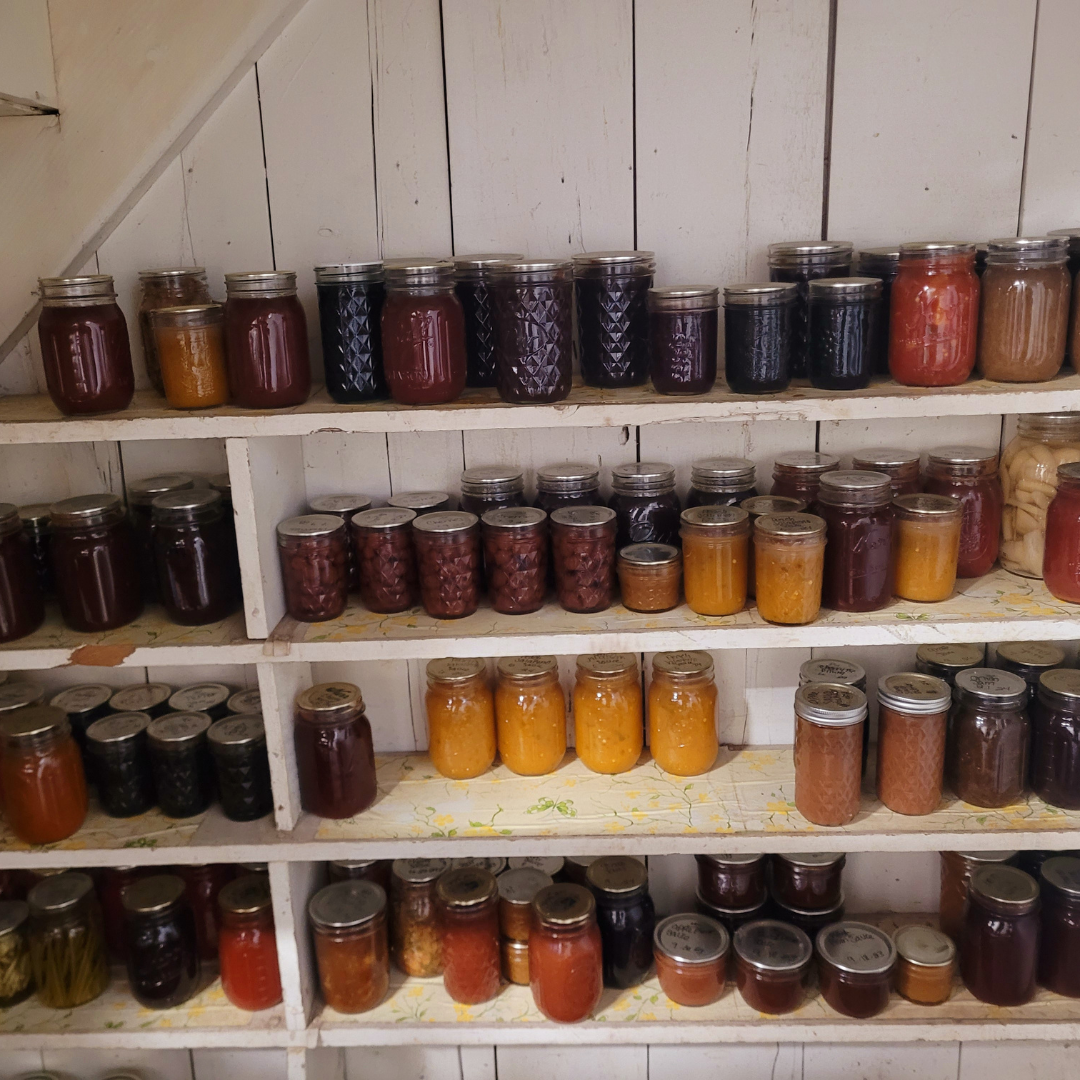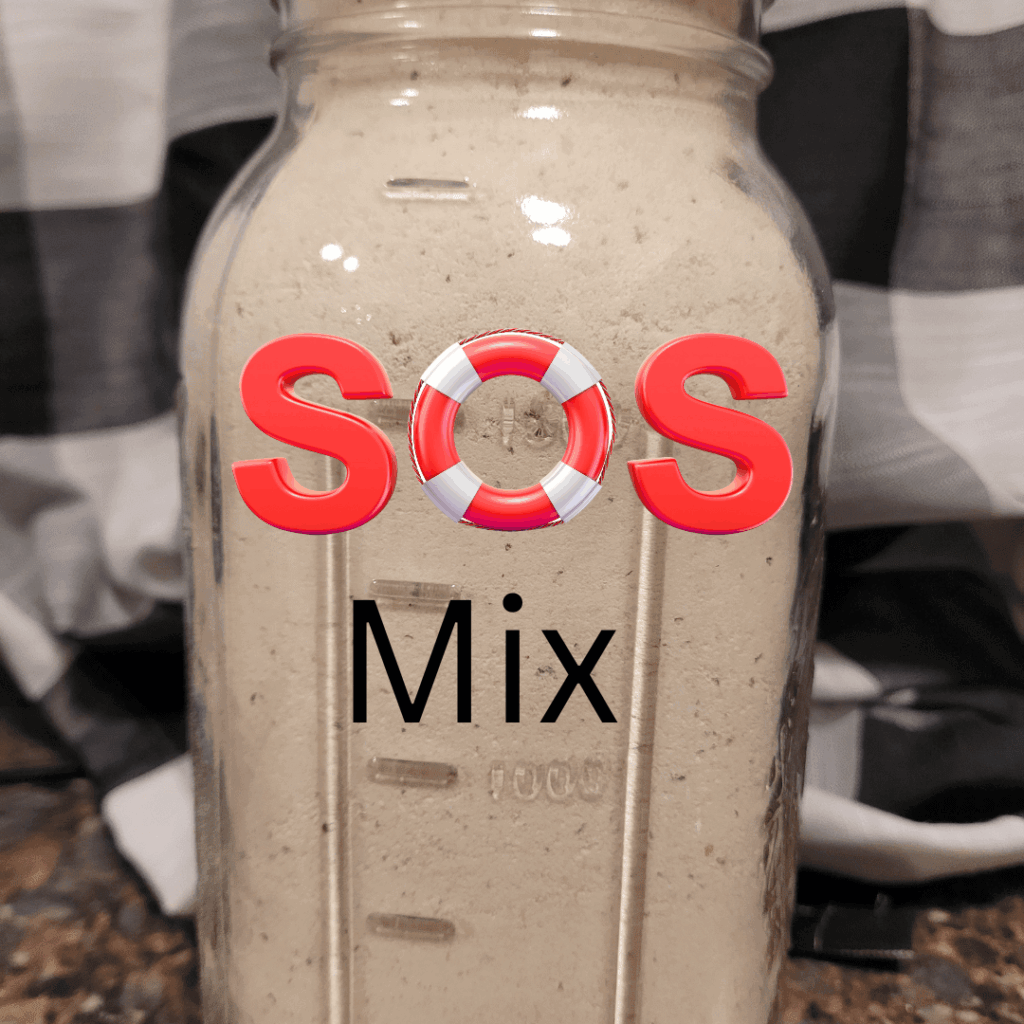Looking to build a reliable, well-stocked pantry without breaking the bank? Practical Pantry Prepper: Essential Guide walks you through smart, efficient strategies for stocking your kitchen with long-lasting, versatile foods. From organizing essentials to understanding shelf life and rotating supplies, this guide helps you prepare for emergencies, unexpected shortages, or just everyday convenience. Perfect for preppers, busy families, and anyone wanting peace of mind in the kitchen.
As someone who’s been living a self-sufficient lifestyle for years, I’ve learned the value of a well-stocked pantry. It’s not just about surviving an emergency—it’s about creating a kitchen that makes daily life easier, reduces waste, and saves money. In this Practical Pantry Prepper: Essential Guide, I’ll share my tried-and-true tips for choosing essential foods, organizing them efficiently, and maintaining a pantry that’s ready for anything. Whether you’re a seasoned prepper or just starting out, this guide will help you build a pantry that’s practical, reliable, and stress-free.
This is a pinnable post. Tap or hover over any image in this post to pin to your Pinterest Boards.

Understanding the Basics of Food Storage
Understanding the Shelf Life of Various Food Items
So you know those dates stamped on your food packages? The ones that say “best before” or “sell by”? Well, understanding the shelf life of various food items can help you avoid unnecessary waste and save some dough in the process. Let’s start with canned goods. These babies are like the superheroes of the food world.
They can last for years, as long as they’re stored in a cool, dry place. Fresh produce is a different story though. Fruits and veggies have a shorter lifespan, and it varies depending on the type. For example, leafy greens like spinach or lettuce tend to wilt within a week or two, while heartier options such as potatoes and carrots can last several weeks if stored properly.
Dairy products like milk and cheese typically have a best-before date, meaning they’re still safe to consume after that date, but might not be at their prime in terms of taste or quality. Understanding how long each food item stays fresh will save you from tossing out the perfectly good stuff and help you make smarter decisions when stocking your fridge and pantry.
Different food items have different shelf lives, which range from a few days to several years. Fresh fruits and vegetables, dairy products, and other perishable items generally have shorter shelf lives of a few days to a week. On the other hand, canned goods, dried foods, and certain preserved items can last for years if stored correctly. It’s essential to understand the recommended shelf life of each item in your pantry so you can rotate your stock to avoid waste and ensure you always have fresh, safe food on hand.
Here are some more helpful tips when stocking your pantry with long-lasting foods.
- Best Foods to Stockpile for Survival Now: Prep Your Pantry
- Surviving the Unexpected: How to Plan a 6-Month Food Supply
- Surprising Ways to Use Powdered Milk in Your Recipes
- Thirsty for Survival: Expert Guide to Emergency Water Prep Tactics
- SHTF Prepper’s Pantry List: Apocalypse-Proof Your Food Supply Now!
- Survival Foods That Will Last Forever in Your Pantry
Basics of Canned Goods
When it comes to storing home-canned foods properly, there are a few key things to keep in mind to ensure the highest quality and safety. First, always store your canned goods in a cool, dark place away from direct sunlight or heat sources. This will help maintain the flavor and nutritional value of the food. It is also important to regularly check the seals on your jars for any signs of damage or leakage. If you notice any issues, it’s best to discard the jar as it could be contaminated or spoiled.
Additionally, labeling each jar with the date of canning and contents will help you keep track of freshness and prevent confusion. Lastly, rotating your canned goods by using older ones first ensures that nothing goes to waste. By following these simple guidelines, you can enjoy your homemade goodies for months or even years while keeping your pantry organized and well-stocked.
Canned goods are a staple of pantry prepping due to their long shelf life. These food items are cooked in their cans, killing any microorganisms and sealing the container to prevent others from entering. High-acid canned foods, like tomato sauce and fruits, usually last 12 to 18 months, while low-acid canned foods, such as meat or vegetables, can last two to five years. However, cans must be kept in a cool, dark, and dry place to prevent rusting and reduce the risk of can leakage.
Food Preservation: Vacuum Sealing, Freezing, and Dehydration
Preserving food extends its life significantly, making it a great way to store surplus produce or prepare for emergencies. Vacuum sealing removes air from the packaging, slowing down the oxidation process that causes foods to spoil. This method can extend the shelf life of items like raw meats, vegetables, and other perishables in the fridge or freezer.
Freezing preserves food by halting the growth of most microorganisms. Virtually any food can be frozen, including fruits, vegetables, meats, dairy, and baked goods. However, the quality can degrade over time, so it’s best to consume frozen foods within 6-12 months.
Dehydration removes the water from food, which inhibits the growth of bacteria and other microorganisms. Dried fruits, vegetables, and meats can last for months or even years. Be sure to store dehydrated food in a cool, dry place, ideally vacuum-sealed to prevent moisture absorption.
Basic Safety Hygiene
Maintaining proper hygiene is critical to preventing foodborne illnesses. Always clean your hands, equipment, and all surfaces before and after handling food. Remember to separate raw and cooked foods to avoid cross-contamination, cook foods to the right temperatures, and refrigerate foods promptly.
It’s crucial to wash those hands thoroughly with soap and warm water before handling any food. That’s the first line of defense against those pesky microbes. Next up, separate your raw meats from other foods – use different cutting boards and utensils to avoid cross-contamination. Cooking temperatures also play a vital role; make sure your chicken reaches an internal temperature of 165°F (74°C) to kill any lurking bacteria.
Don’t forget to store leftovers properly, which means getting them into the fridge within two hours (or one hour if the temperature is above 90°F/32°C). So remember, clean hands, separate meats, cook it up right, and chill out when it comes to leftovers – your tummy will thank you!
Organizing Your Pantry for Optimal Storage
A good organization can make your pantry more efficient and prevent food waste. Store items with the shortest shelf life at the front where you can see them, so they’re used first. Keep canned and jarred goods together, preferably in a cool, dark place. Group foods by type to make them easier to locate. Remember, the way your food is stored can impact its shelf life and safety, so keep your pantry clean and organized regularly.
In a well-stocked and organized pantry, you’ll have a variety of foods on hand to cover your needs for several days or even weeks. However, it’s essential to routinely check your stock for expired items and replenish as necessary to maintain a continuous supply of safe, nutritious food.
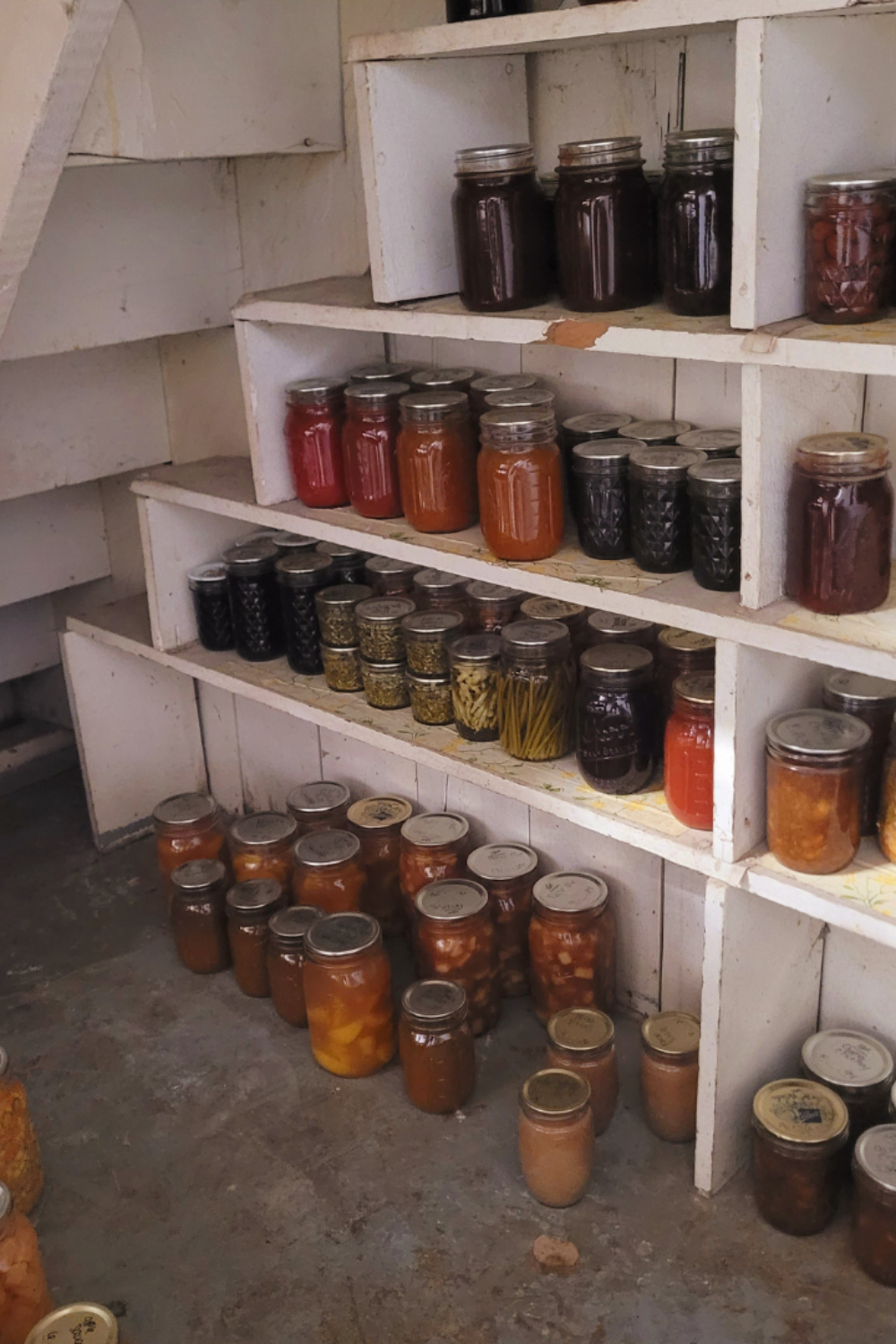
Creating Your Pantry Prepper’s Inventory
Understanding Your Family’s Eating Habits
Understanding your family’s eating habits can provide valuable insights into your overall health and well-being. It’s important to recognize that eating habits go beyond just what is on our plates; they include the entire process from meal planning to food preparation and consumption. Take a step back and observe how your family approaches food. Are there certain patterns or rituals in place? Do you tend to eat meals together or separately? Understanding these dynamics can help you identify areas of improvement.
Additionally, paying attention to the types of foods your family regularly consumes can shed light on potential nutrient deficiencies or excessive intake of unhealthy options. By becoming more aware of your family’s eating habits, you can make informed decisions about dietary changes that will promote a healthier lifestyle for everyone involved.
When commencing your Pantry Prepper’s Inventory, the first step involves understanding your family’s eating habits. Take note of the types and categories of food your family members naturally gravitate towards. Do you guys include many grains in your diet? Do the kids love canned fruits? Understanding your eating habits will help steer the items you need to stock up in your pantry.
Determining the Right Quantity of Food to Store
Next, you need to determine the right quantity of food to store. A good rule of thumb is to plan for one month’s worth of meals at a minimum. Consider factors like family size, special dietary needs, and how often you cook at home. Quantifying your pantry needs takes some logistical planning, but taking the time to figure it out can ensure you are prepared without wasting resources.
Learn more about how to grocery shop once a month.
How to Grocery Shop Once a Month
When it comes to determining the right quantity of food to store, there are a few important factors to consider. First and foremost, you need to take into account the number of people in your household and their individual dietary needs. This includes considering any specific dietary restrictions, preferences, or allergies that may affect what foods you should stock up on. It’s also crucial to think about the duration of time you anticipate needing this stored food. Are you preparing for emergencies or natural disasters? Or are you simply looking to have a backup supply of food?
Additionally, it’s essential to evaluate your storage space and make sure it can accommodate the amount of food you plan on storing. This means taking into account perishable items that require refrigeration or freezing, as well as dry goods that can be kept at room temperature. By carefully assessing these factors, you’ll be able to determine the ideal quantity and variety of food to store for your specific needs.
Selecting Long-Lasting Food Items
The choice of what to store should lean towards food items that last long. Think along the lines of canned fruits, vegetables, meats, fish, powdered milk, and grains like rice and lentils. These products have a longer shelf life, and they’re less likely to spoil quickly compared to fresh ingredients. Long-lasting food items form the foundation of a successful Pantry Prepper’s Inventory.
Again, here are some more helpful tips when stocking your pantry with long-lasting foods.
Survival Foods That Will Last Forever in Your Pantry
Ensuring a Balance of Nutrients
Ensuring a balanced diet is equally important when building a Pantry Prepper’s Inventory. This includes having enough proteins, carbohydrates, fats, vitamins, and minerals. The World Health Organization (WHO) suggests that a well-balanced diet can help to strengthen the immune system and lower the risk of chronic diseases and infections. Be sure to include food items rich in these nutrients in your inventory.
Rotating Stock Regularly to Maintain Freshness
It’s essential to rotate your food stock regularly to maintain its freshness. First in, first out is a crucial rule in food storage. By using older items first and placing new ones behind them, you ensure the food remains as fresh as possible when it’s time to use it. Regular inventory checks allow you to keep track of expiration dates and dispose of anything past its prime. This habit will keep your Pantry Prepper’s Inventory fresh and safe for consumption.
If there’s one thing we can all agree on, it’s the importance of freshness when it comes to our food. That’s why rotating our food stock regularly is such a crucial part of keeping our meals delicious and nutritious. By making sure that the oldest products are used first and new items are placed at the back of the shelf or refrigerator, we ensure that nothing goes past its prime. Not only does this practice maintain the taste and texture we desire, but it also prevents us from consuming expired or spoiled food.
Additionally, by staying on top of our food rotation game, we reduce waste and save money by avoiding unnecessary trips to the grocery store for replacements. So let’s embrace this simple yet effective habit and savor every bite of fresh goodness in our meals!
Cooking with Stored Foods
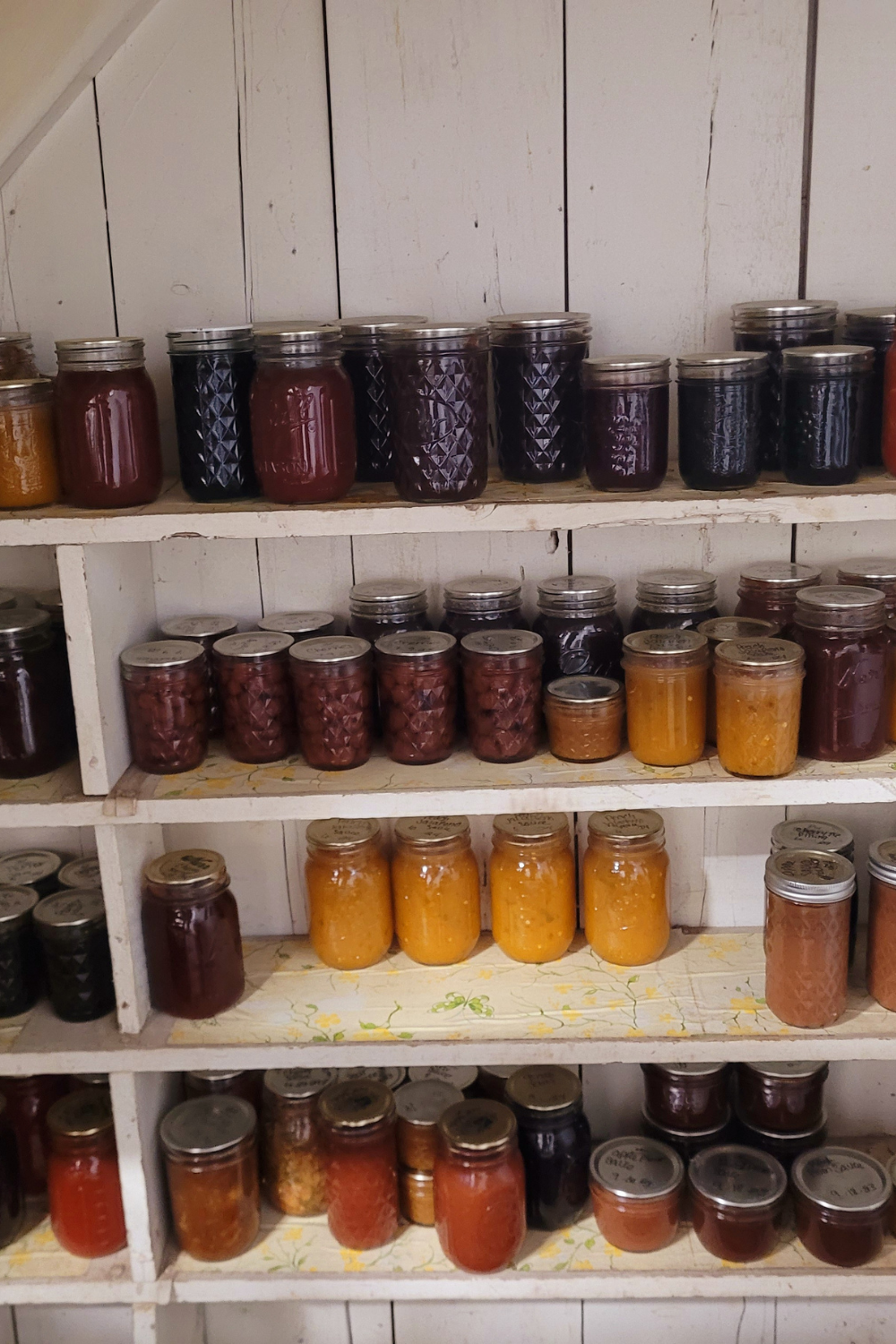
Meal Planning with Stored Foods
Meal planning with stored foods requires thoughtful consideration of your pantry items. Make an inventory list of the food items that you have on hand. Don’t forget to account for sauces, spices, and condiments, as these can greatly enhance the taste of your meals.
Next, categorize your foods based on their nutrition, like proteins, grains, vegetables, and fruits. Then, with this list, formulate weekly meal plans that balance these categories and satisfy your dietary needs. Remember that by focusing on using your perishables first, such as canned vegetables and fruits, you prevent them from going bad.
Cooking Methods Suitable for Stored Foods
Preparing meals with stored foods doesn’t always mean you’re limited to simple canned meals or dried foods. With the right cooking techniques, these could be turned into gourmet dishes.
For grains, opt for boiling or stewing techniques. Canned meats and veggies can be heated up in a pan. Dried beans or lentils can be soaked overnight and boiled until tender. Dehydrated fruits can be rehydrated with water and added to baked goods, salads, or as toppings for cereal and yogurt.
Rehydrating Freeze-Dried or Dehydrated Ingredients
Rehydrating your freeze-dried or dehydrated foods is essential to unlock their flavor and texture. Each type of food may have different rehydration requirements.
Pour boiling water over freeze-dried foods and let it rest for 5-10 minutes before consuming. Always consult the packaging for specific instructions based on the type and brand of food. Once rehydrated, these foods can be used as if they were fresh.
For dehydrated foods, a slower rehydration process is often required. Soaking dehydrated foods in water, soup, or stock for hours, or even overnight, can bring them back to their original form.
Getting Creative with Stored Foods to Avoid Meal Fatigue
Utilizing stored foods for meals doesn’t have to be boring. With a little imagination, you can easily whip up something new and exciting.
Experiment with different combinations and flavors. Use grains, such as rice or pasta, as a base, and add vegetables and protein sources, such as canned tuna or chicken. If you have powdered milk or cheese, rehydrate it for creamy sauces.
Fruits, either canned or freeze-dried, are excellent in baked goods, while add-ins such as raisins or other dried fruits can elevate oatmeal or other breakfast cereals. Do not be afraid to experiment and create your unique meals with what you have.
Use various seasonings and spices to change the flavor profiles of your meals. This can help add variety and prevent meal fatigue. With just a little bit of planning and creativity, you can transform simple stored foods into delicious meals.
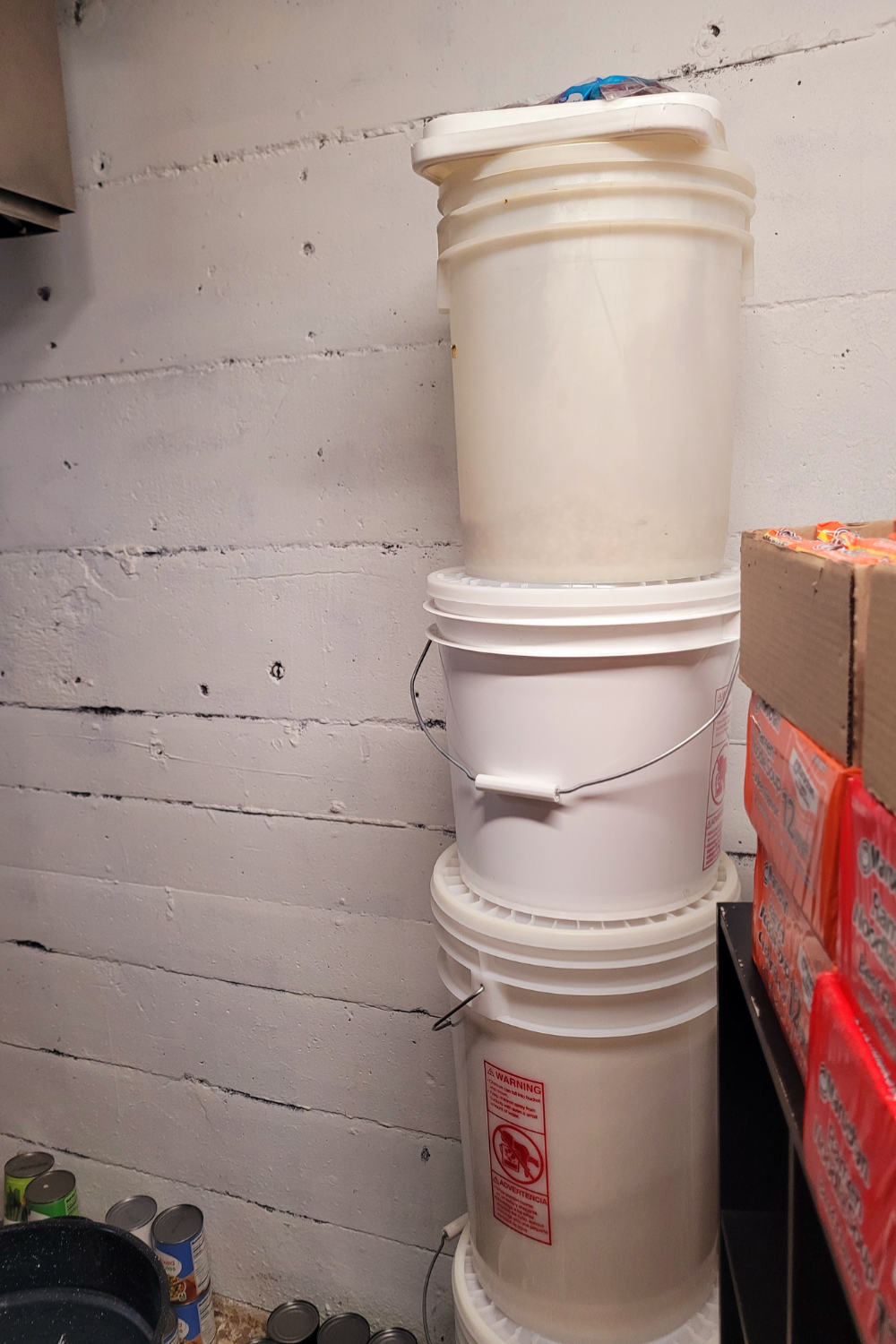
Maintaining Your Prepared Pantry
Regular Check on Stored Foods
The foundation of maintaining your prepared pantry involves regularly checking your stored foods for freshness and signs of spoilage. Always pay attention to expiration dates and be aware of any unusual characteristics, such as a change in color, odor, or texture. Canned goods could become spoiled if there is rust around the can or signs of swelling. Similarly, dry goods such as pasta or rice can become infested by pests if not stored properly. Always discard any food with these signs immediately to prevent any health issues.
Now, we all love having a stocked pantry filled with goodies, but it’s crucial to keep an eye on those products to ensure they’re still good to eat. Regularly examining your stored items helps prevent the risk of consuming expired or spoiled food, which can lead to some nasty stomach issues. It’s a good habit to inspect the packaging for any signs of damage or pests that might have found their way in.
Don’t forget to check expiration dates as well because no one wants to unwittingly munch on stale crackers or drink overly preservative-laden juices! By making this a routine practice, you can maintain the quality and safety of your food supply, saving yourself from unpleasant surprises when hunger strikes.
Tracking and Replenishing Inventory
Keep your pantry well-stocked by tracking and replenishing your inventory. Having a written inventory or a digital one on your smartphone could help you track what you use and what needs to be replaced. This way, you wouldn’t run out of essential items in times of need. Whenever you consume an item from the pantry, make a habit of marking that item in the inventory. Regularly replenish your stock every few weeks or months, depending on the consumption rate.
Keeping tabs on what’s in stock and ensuring we never run out of delicious goodies is actually quite important. You see, tracking our food inventory allows us to stay organized and avoid any potential shortages or wastage. It involves keeping a meticulous record of all the products we have in stock and their expiration dates, so we can use them efficiently before they go bad.
This means regularly updating our inventory spreadsheet or using handy apps that make this process a breeze. When it comes to replenishing our supplies, careful planning is key. We need to assess consumption patterns, check sales reports, and communicate with suppliers to ensure a smooth flow of fresh ingredients. So roll up those sleeves and let’s keep our shelves stocked with mouthwatering treats!
Pantry Cleanliness Best Practices
It is important to maintain a clean and organized pantry as it reduces the chance of spoilage and pest infestation. Wipe down shelves regularly with warm, soapy water. Don’t neglect corners and hidden areas where residue often accumulates. To prevent attracting pests such as bugs or rats, always make sure that any spills are cleaned up immediately. Always properly seal food containers and packages. Use air-tight containers for storing open packages of dry foods.
Updating Food Storage Based on Dietary Needs or Preferences
One essential aspect of pantry management is the continual updating of your food storage based on changing dietary needs or preferences. Food requirements might change if someone in your home starts following a specific diet, has a health condition, or develops food allergies. Always keep this in mind and reorganize your pantry according to these changing needs. For instance, switch out gluten-filled items for gluten-free alternatives if needed. Prioritize stocking the pantry with items most used and preferred by your household for everyday cooking and meal preparation.
Also, always remember to rotate your food. This means using up older stock before using the newer ones. This practice extends the life of your pantry, ensures nothing goes to waste, and always provides you with fresh food.
Conclusion
Indeed, becoming a Pantry Prepper is a meticulous yet rewarding process that provides the satisfaction of self-sufficiency while also offering peace of mind regarding food security. As we have navigated through the basics of food storage, pantry inventory creation, cooking with stored foods, and maintaining a sound and stocked pantry, we can truly appreciate the resilience that such practices imbue in us. As these practices continue to evolve based on changing dietary needs and preferences, it is essential to stay informed and prepared, allowing us to face the future with confidence and readiness, one shelf at a time.
Frequently Asked Questions
1. What is a pantry prepper?
A pantry prepper is someone who strategically stocks essential foods and supplies to be ready for emergencies, shortages, or everyday convenience.
2. How do I start prepping my pantry?
Begin with staple foods like grains, beans, canned goods, and long-lasting essentials. Organize by category and track expiration dates for easy rotation.
3. How much food should I store?
Start with a 2-week supply and expand over time. Your goal is a pantry that supports your household comfortably while minimizing waste.
4. Can pantry prepping save me money?
Absolutely! Buying in bulk, rotating supplies, and reducing last-minute trips to the store help you save both time and money.
5. Do I need special equipment for pantry prepping?
Not necessarily. Basic storage containers, shelving, and proper labeling are usually enough to get started.
Summary
I hope I have inspired you to stockpile your pantry for your survival needs.
If you were encouraged by this post, I invite you to check out my FREE Printables Page for fun free printables, planners, and charts.
ENTER MY FREE Printables Page HERE
Here are some more of my canning inspiration posts to check out!
How to Make and Can Fall Spiced Quince Chutney
Quince: How to Can Quince
Carrot Cake Butter: How to Make and Can Carrot Cake Butter
Peach Pie Filling: How to Make and Can Peach Pie Filling
Pear Pie Filling: How to Make and Can Pear Pie Filling
The Best Winter Pantry Staples to Stockpile Now!
More Recipes!
Grapes: How to Make and Can Grape Jam
Apple Cider: How to Make Homemade Apple Cider Vinegar
How to Make and Can Cherry Plum Jam
How to Make and Can Apple Butter In Crockpot
Stockpiling Condiments for Survival: Learn How I Do It!
How to Make and Can Vegetable Pot Pie Filling
Easy Canning Applesauce Recipes to Stalk Your Pantry!
How to Make Peach Jalapeno Jam
Cherries: How to Make Cherry Pie Filling
Cherries: How to Make Cherry Syrup
Salsa: How to Make and Can Cherry Salsa
Peaches: How to Make and Can Peach Salsa
Canning Supplies You Need Now for a Successful Canning Season!
How to Make and Can Balsamic Onion Jam
Cranberry Sauce: How to Make and Can Old Fashioned Cranberry Sauce
How to Make and Can Cranberry Merry Jam
How to Make and Can Strawberry Shortcake Jam
Cherry Jam: How to Make and Can Cherry Pie Jam
Carrot Cake Jam: How to Make and Can Carrot Cake Jam
Quince Jam: How to Can a Year’s Supply of Quince Jam
Root Beer Float Jelly: How to Make and Can Root Beer Float Jelly
Blessings,
The Off Grid Barefoot Girl

